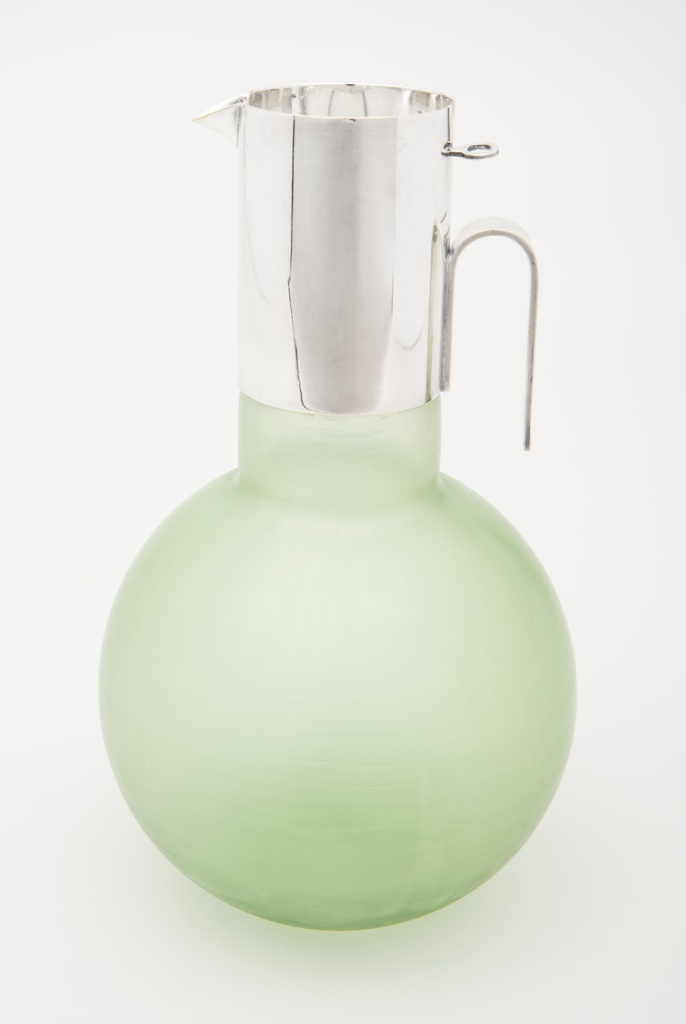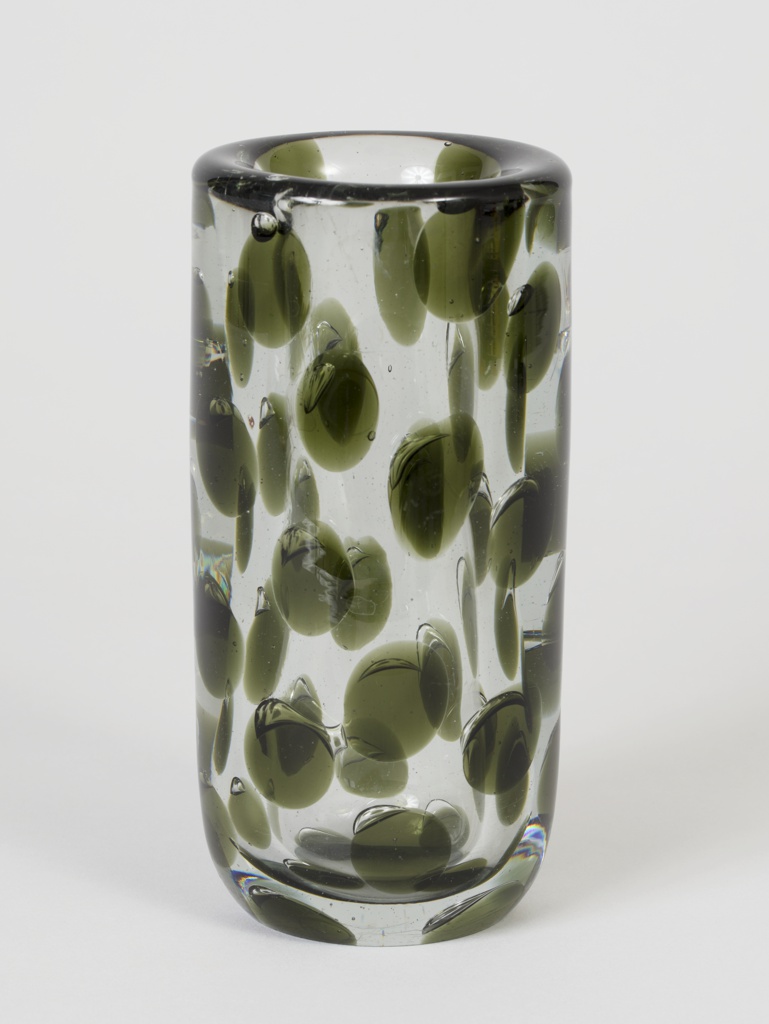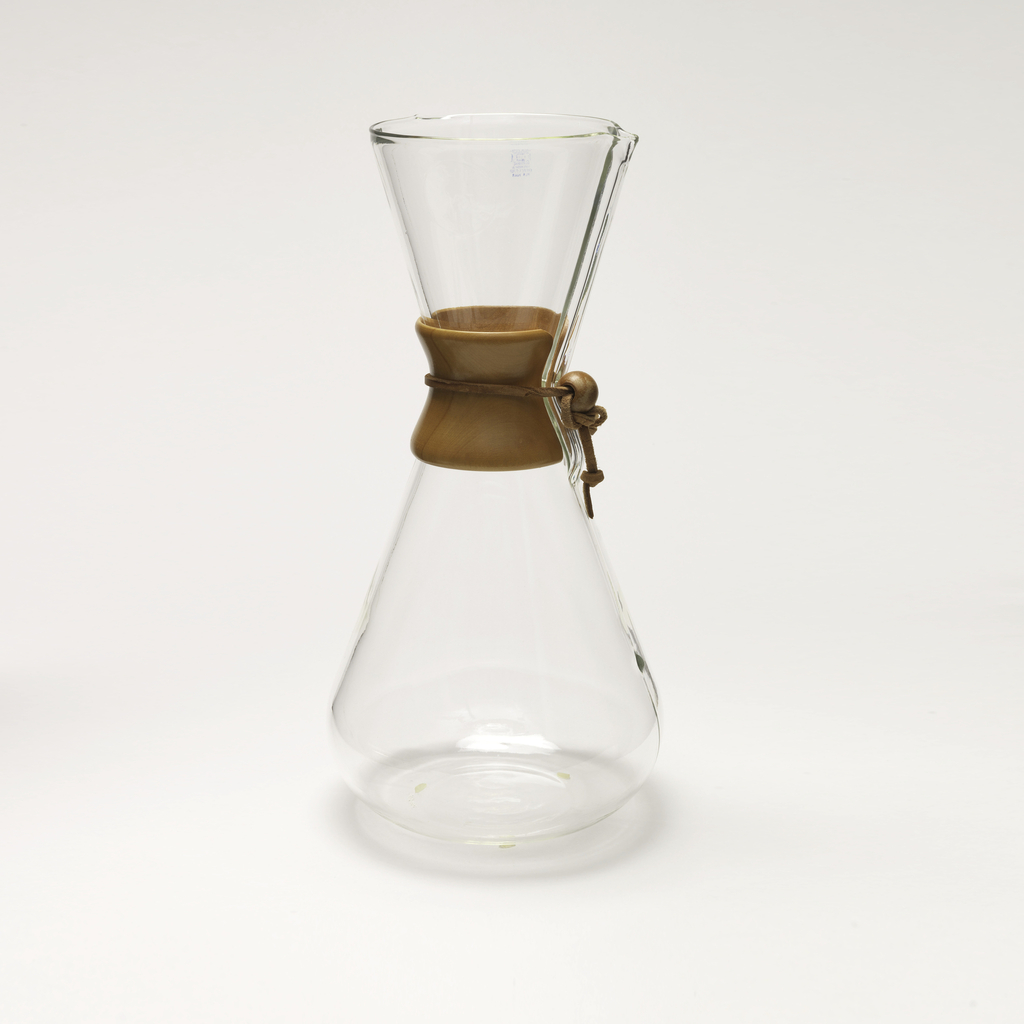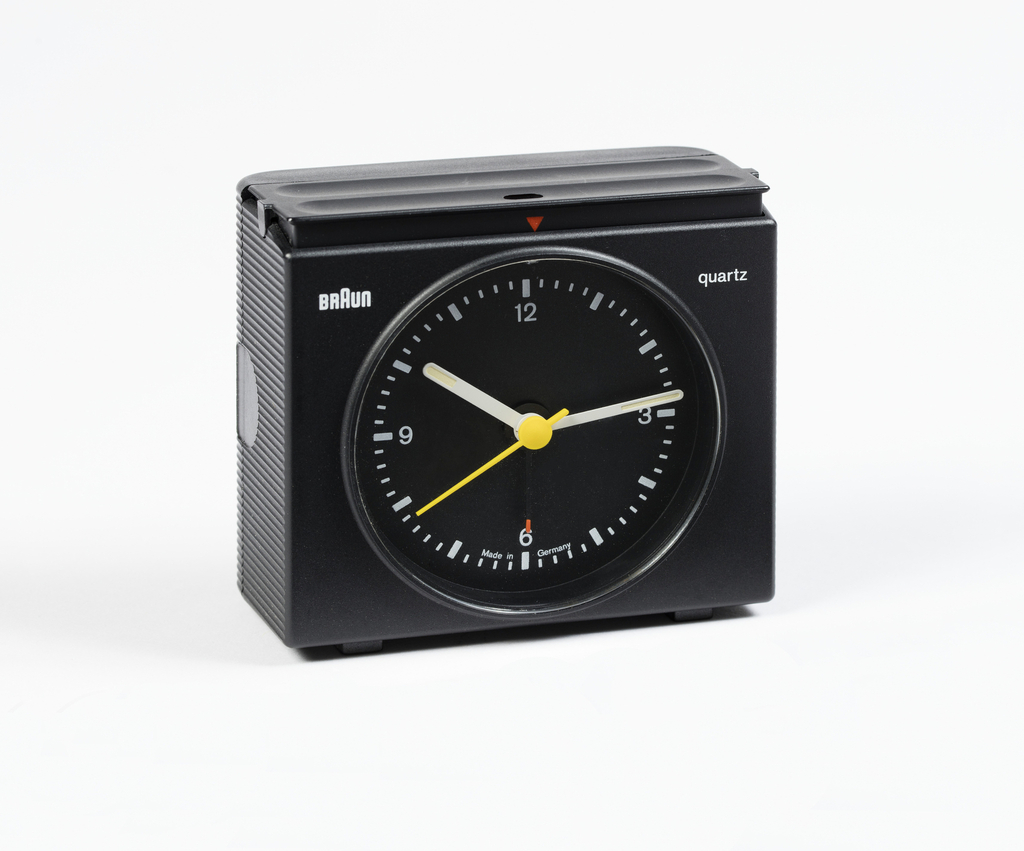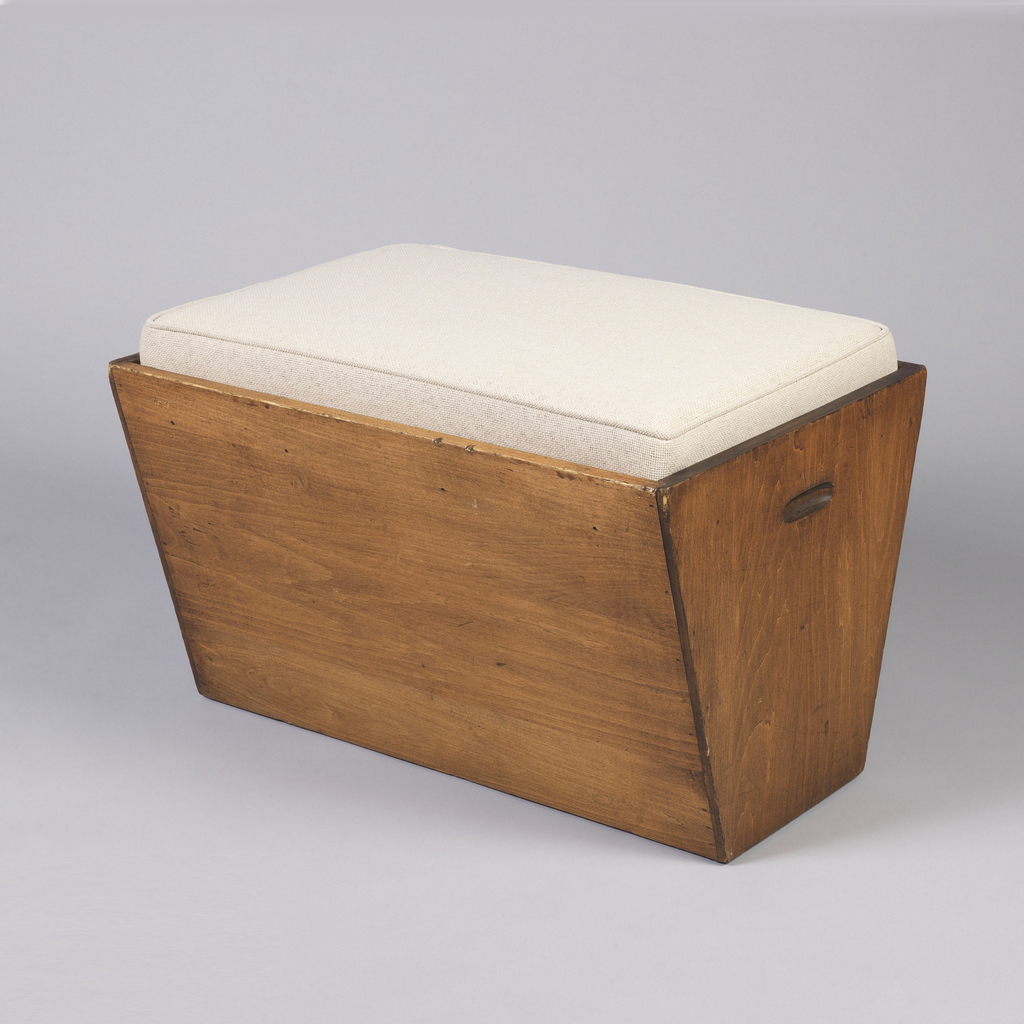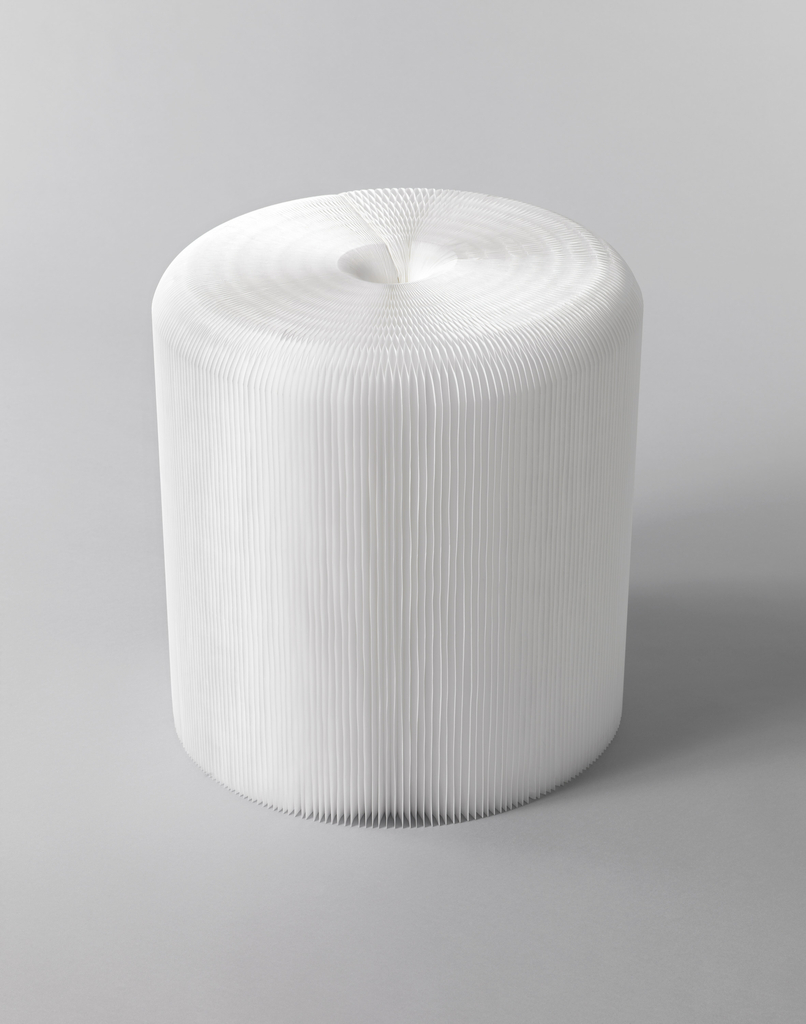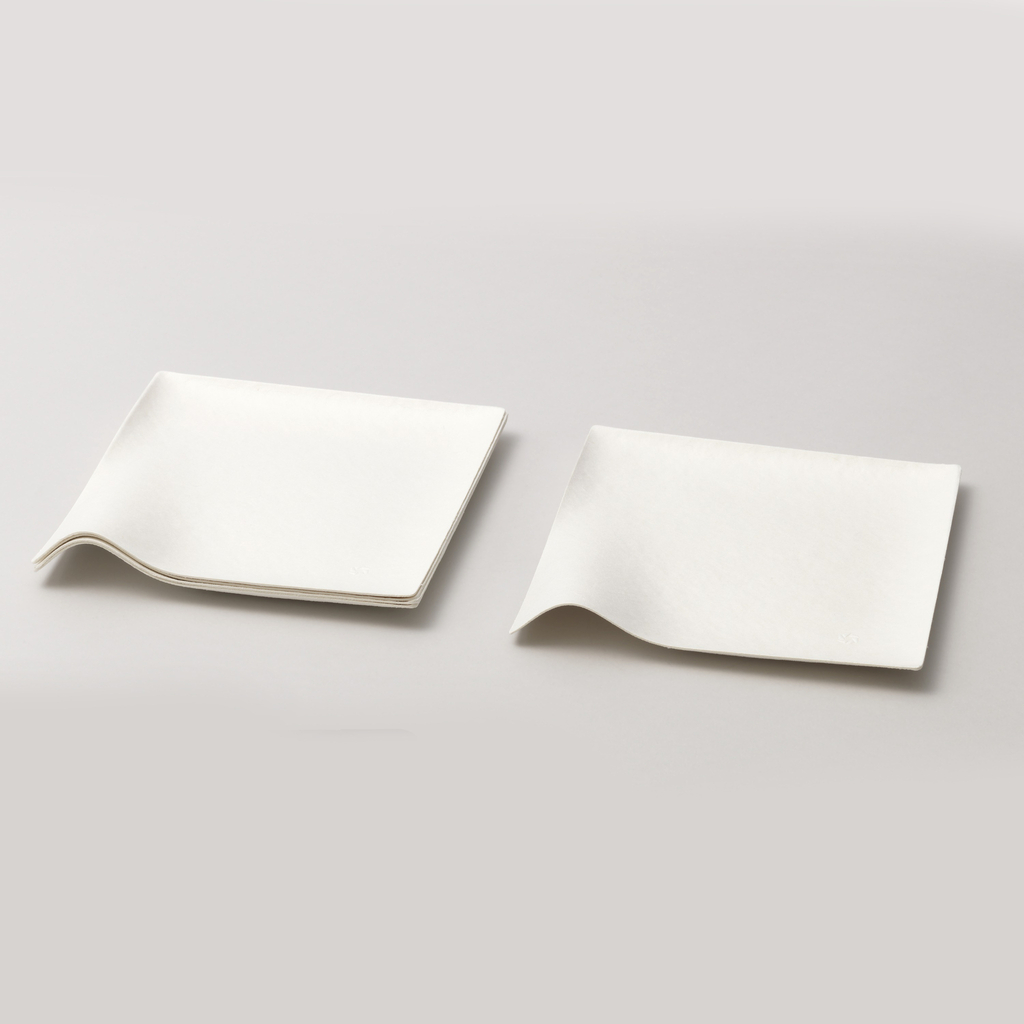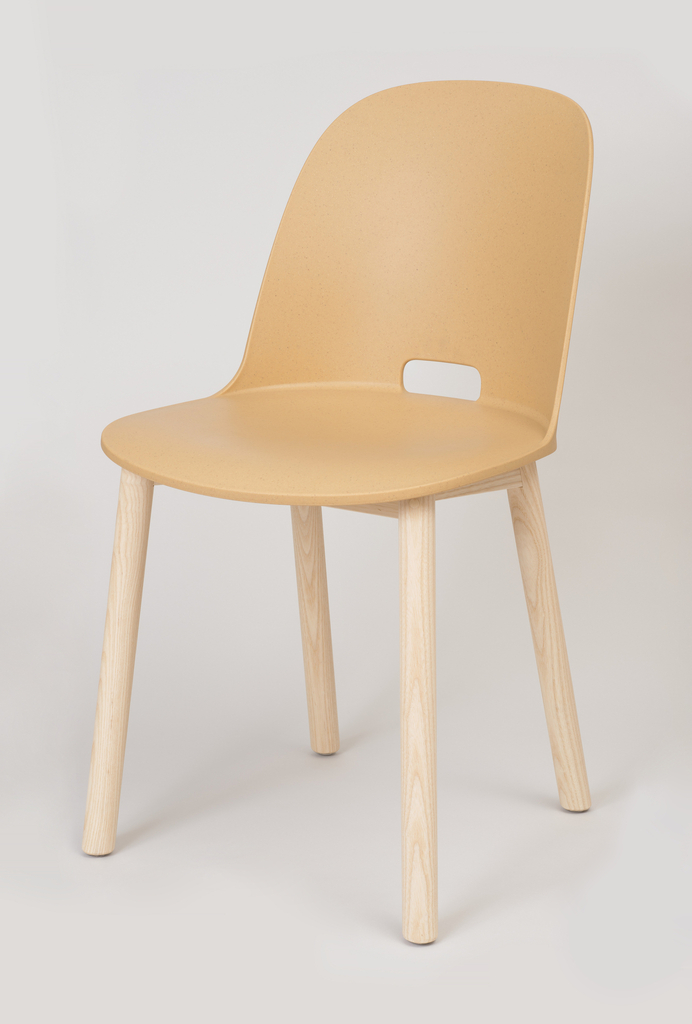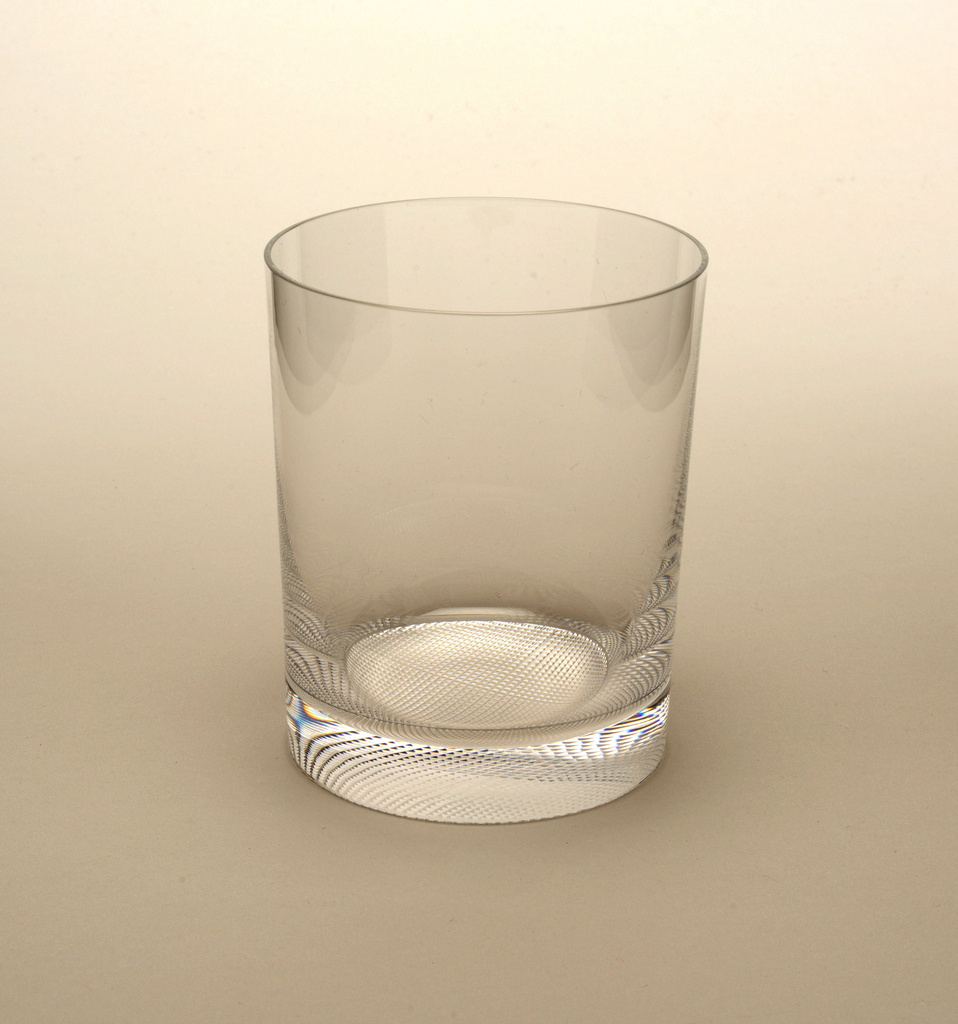Designer Massimo Vignelli was known for the sense of sophistication and refinement he brought to the product, graphic, and furniture design that he produced first in Italy, and later in the U.S. working with his wife Lella, also a designer. While a student at the School of Architecture in Venice, Vignelli learned about glass from architect and glass...
Saara Hopea (later Saara Hopea-Untracht) began her career as a furniture and lamp designer, but started designing glassware in about 1952, at a time when Finnish design was gaining prominence on the world stage for its strong attention to materials and sense of organic form in a modern idiom. Kaj Frank, Hopea’s former teacher at...
This coffee maker was devised by chemist and inventor, Dr. Peter Schlumbohm, for the Chemex® Corporation. It is made of heat-resistant non-porous borosilicate glass, and surrounded by a wood collar tied with a leather thong, that serves as an insulated handle with which to pour the hot beverage. The ingenious use of glass allows the...
Dieter Rams, the co-designer of this alarm clock, said that good design should “omit the unimportant in order to emphasize the important.” This travel alarm clock embodies his philosophy and design aesthetic—one which became iconic for Braun in the 1970s. The clock features an economic use of color and Akzidenz Grotesk, an easy-to-read sans serif...
A discussion of American architecture cannot be complete until Frank Lloyd Wright enters the conversation. One of the most prolific and renowned architects of the 20th century, he was a radical designer and intellectual who embraced new technologies and materials. Largely focusing on organic architecture, he believed that structures should be in harmony with humanity...
The softseating stool is a collapsible form made of white, paper-thin honeycombed polyethylene sheets joined between two white cardboard panels that connect with magnets to form a cylindrical shape. When fanned outward and secured, the polyethylene sheets are sturdy enough to support weight, yet remain comfortable to the user. The stool is portable, lightweight, and...
This simple plate is part of a large collection of disposable tableware designed by Shinichiro Ogata and produced by Wasara in Japan, with sustainability in mind. Made from a pulp consisting of biodegradable and compostable reed, bamboo and bagasse (a byproduct of sugarcane processing), these delicate looking yet durable wares take myriad forms, which allow...
The Alfi chair is the product of a 2015 collaboration between British furniture-maker Jasper Morrison and American manufacturer Emeco. The chair’s simplicity expresses Morrison’s concept of “Super Normal” design, whereby objects are significant because of their everyday usefulness. The chair’s sturdy stance is in line with Emeco’s history as a manufacturer that prides itself in...
The Austrian architect Adolf Loos (1870-1933) designed a set of drinking glasses in 1931 to be shown at the Exhibition of Interiors in Cologne. His intention was to display to the public how an updated table setting should look. Loos, who was known to have a simplified, rectangular and rectilinear design aesthetic chose the well-known...
